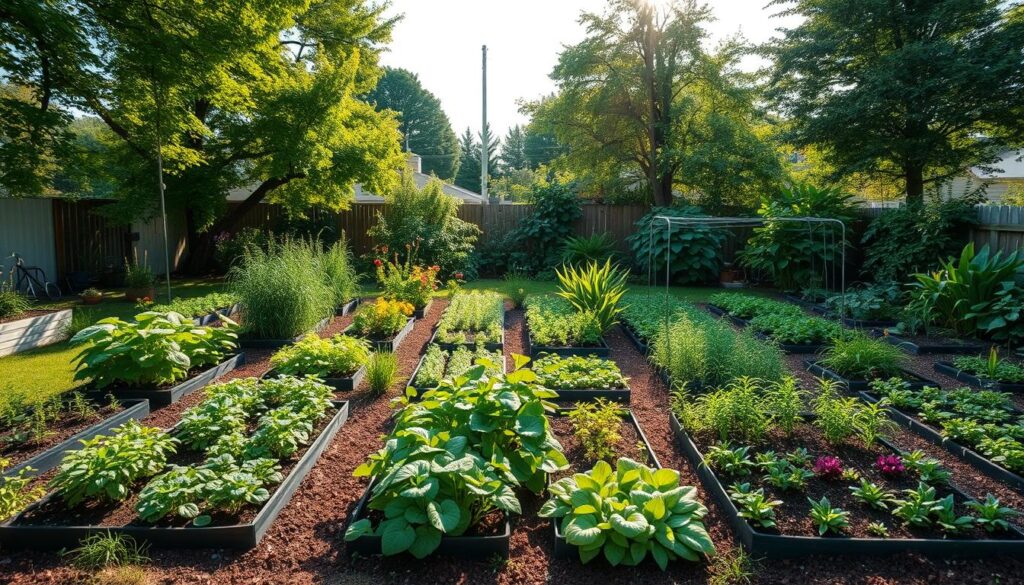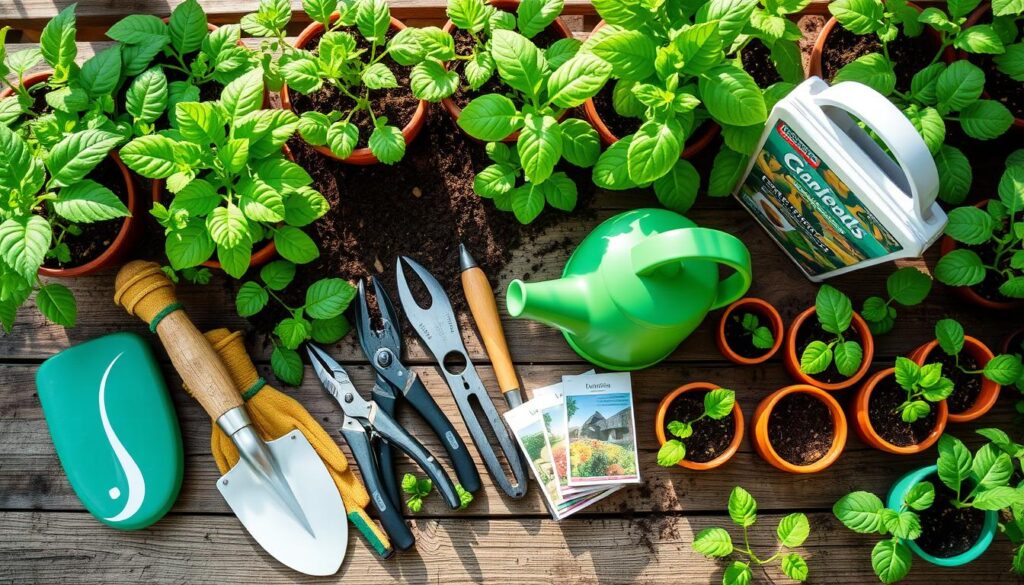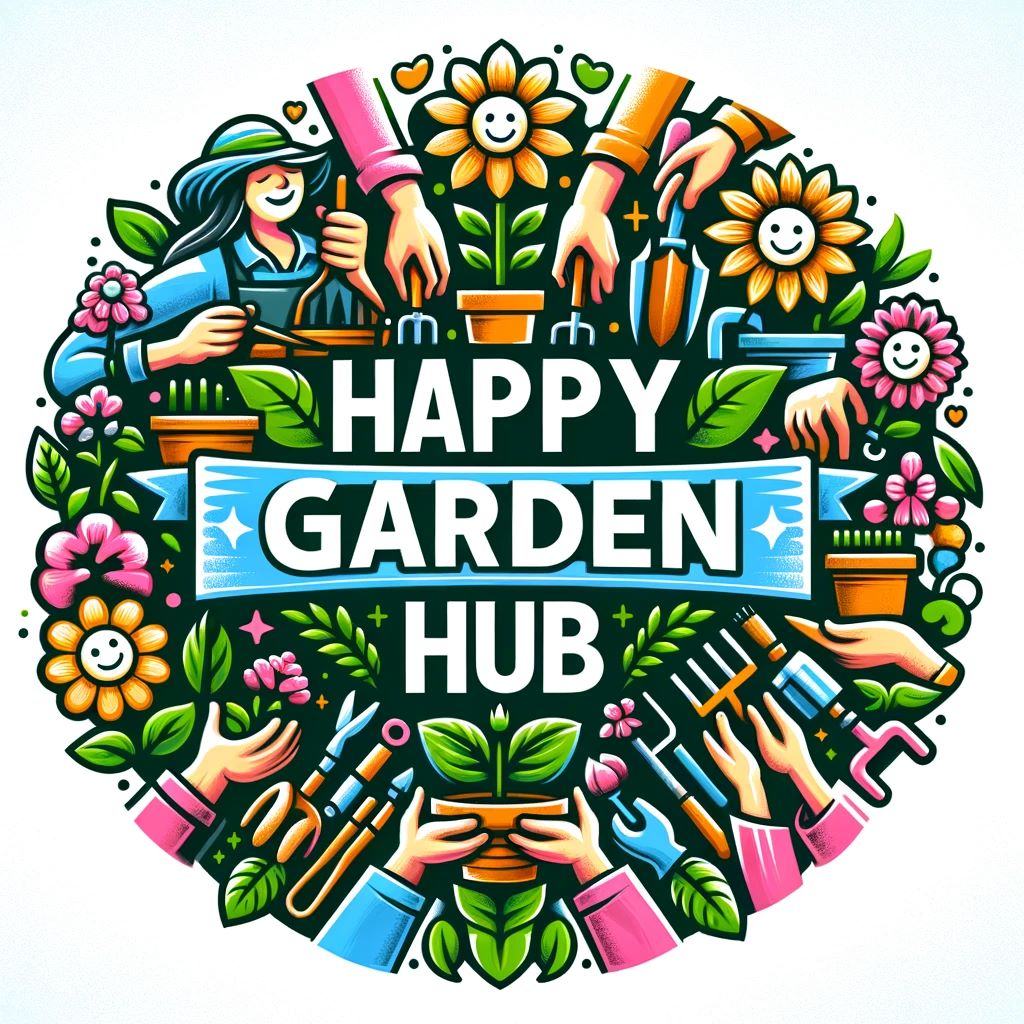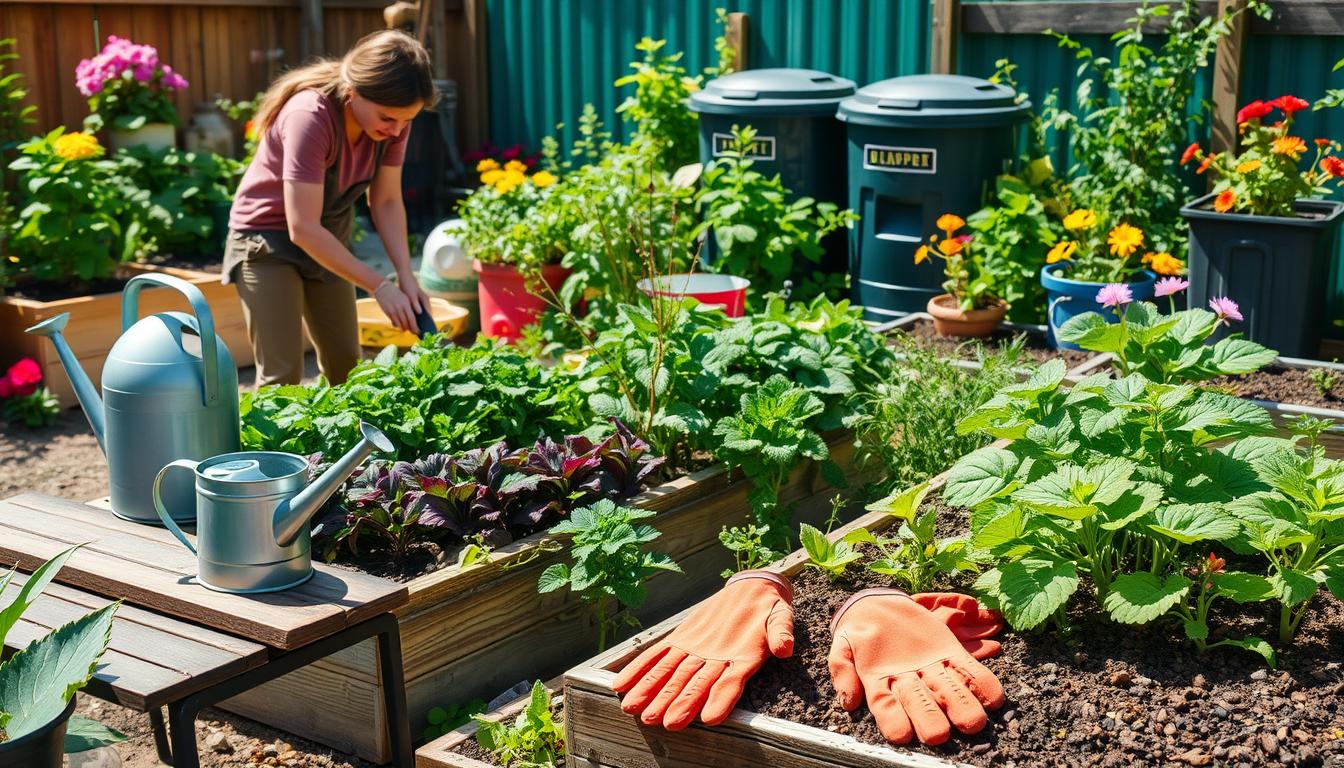This post contains affiliate links.
Imagine pulling a fresh carrot from the earth. Its vibrant orange color stands out against the rich soil. Gardening can be deeply rewarding, connecting you to nature and your food. It’s key to learn the basics to grow a thriving garden.
For beginners, mastering these basics can lead to a rewarding hobby. It not only beautifies your garden but also boosts your mental health. Gardening can also save you money by providing fresh produce.
As you start, you’ll learn about the importance of location and soil quality. You’ll also discover how to choose the right plants for your garden. Whether you’re into vegetable or flower gardening, your experience will flourish.
To start your gardening journey, check out resources like the essential garden tools guide. The right tools can make gardening easier and more enjoyable. They help you bring nature’s beauty into your backyard.
Key Takeaways
- Home gardening techniques can significantly reduce grocery costs while providing fresh produce.
- Basic tools are vital for beginners to cultivate successful gardens.
- Choosing the right plants, considering soil quality, and factors like sunlight availability are crucial.
- Watering and fertilizing practices greatly influence plant health and growth.
- Understanding the seasons is essential for timing the planting of your favorite vegetables.
Introduction to Home Gardening
Home gardening is getting more popular as people want to grow plants at home. This is because of a desire for healthy food, sustainability, and self-sufficiency. Gardening at home is not just fun; it also keeps you active and makes you feel accomplished.
Knowing what plants need is key to gardening success. Most veggies and flowers need 6-8 hours of sunlight a day. Beginners should learn about gardening tips like sunlight, soil, and water to grow a lively garden.
Gardening is more than just a hobby; it connects you to nature and boosts your well-being. Whether you start with seeds or use established plants, learning and practicing are crucial. With patience and attention to details like location and soil, anyone can make their backyard bloom.
Importance of Location in Gardening
Knowing the right spot for your garden can make all the difference. It’s key to check how much sunlight and water your plants get. This helps them grow strong and healthy.
Evaluating Sunlight Availability
Most veggies need at least six hours of direct sunlight a day. More, like 8 to 10 hours, is even better. Watch your yard during the day to find the sunniest spots.
Staying away from big trees or buildings is wise. They might block too much sunlight. Also, avoid areas near black walnut trees. Their chemicals can harm your plants.
Choosing a Site Near Water Sources
Having clean water nearby is crucial. It makes watering easier and keeps your garden healthy. Make sure the water is safe for your plants.
Choosing the right spot means your plants get watered often. This keeps the soil moist but not too wet. Wet soil can hurt your plants’ roots.

| Type of Garden Site | Sunlight Exposure | Water Proximity |
|---|---|---|
| Sunny garden | 8-10 hours | Close to water source |
| Partial shade garden | 4-6 hours | Moderate distance from water |
| Sunny but contaminated soil | 8-10 hours | Close to water source (not recommended) |
Understanding Soil Quality
Soil quality is key for a garden’s success. Without good management, even the most careful gardeners may face challenges. Nutrient-rich soil is vital for healthy plants. By knowing how to improve soil with compost, garden lovers can make their plants thrive.
Characteristics of Nutrient-Rich Soil
Nutrient-rich soil has a mix of elements for plant growth. It includes:
- Mineral Composition: About 45% of soil comes from weathered minerals, affecting soil function.
- Soil Texture: Loam, with sand, silt, and clay, is best for plants.
- Organic Matter: Organic material boosts soil quality. Aim for 1 to 3 inches of amendment in the top 6 to 12 inches of soil.
- Water Retention: Organic mulches keep rainwater and manage runoff, crucial for moisture.
Improving Your Soil with Compost
Adding compost to your garden improves soil quality. Compost, made from organic materials, adds nutrients and supports microbes. Regular soil tests, like Penn State’s, help measure organic matter and suggest amendments.
To enrich soil, apply a 2- to 4-inch layer of organic mulch in mid-spring. This protects soil and improves its structure. Adding organic matter, like animal manure or compost, increases water retention. Also, using green manure crops in off-seasons can enhance soil quality and plant health.
Essential Gardening Supplies for Beginners
Starting a gardening journey needs the right tools. For beginners, basic tools make gardening fun and efficient. Choosing beginner gardening tools helps with many tasks.
Basic Tools Required
Having the right tools is key for any garden. Here are some must-haves:
- Foxgloves: These gloves protect your hands while gardening.
- Ratcheting Pruners: Great for those who need extra strength, they cut efficiently.
- Radius Garden 203 Pro Ergonomic Steel Digging Fork: Good for turning soil with its stainless steel tines.
- Garrett Wade Tulip Trowel: Ideal for planting bulbs and working around trees.
- King of Spades Model 38 Balling Spade: A durable spade that won’t break easily.
- Tabor Tools Adjustable Metal Rake: Flexible for reaching tight spots or gathering leaves.
- Rogue Garden Hoe 575G: Made from tempered steel for a sharp edge.
- Dramm One-Touch Rain Wand: Gentle for watering delicate plants.
- Bloem Deluxe Watering Can: BPA-free and easy to use outdoors.
- Kneeling Pads: Comfortable for long gardening sessions.
Types of Seeds: Conventional vs. Organic vs. Heirloom
Knowing about types of seeds is crucial for gardening. Here’s a quick guide:
| Seed Type | Description | Benefits |
|---|---|---|
| Conventional Seeds | Seeds made for high yields and disease resistance. | They grow well and are efficient. |
| Organic Seeds | Seeds grown without synthetic chemicals. | They support a healthy ecosystem and sustainable gardening. |
| Heirloom Seeds | Traditional varieties passed down through generations. | They offer unique flavors and genetic diversity. |
Learning about organic gardening helps beginners. Check out Happy Garden Hub for expert advice.

Choosing the Right Plants for Your Garden
Choosing the right plants is key to a successful garden. For beginners, picking the right plants can make gardening more enjoyable and productive. Marin’s mild weather offers a wide range of plants to choose from.
Learning about easy-to-grow vegetables is a great start for new gardeners. These plants, like lettuce and cucumbers, are easy to care for and grow well.
An Overview of Easy-to-Grow Vegetables
Starting with easy vegetables is a smart move for beginners. Lettuce, radishes, cucumbers, and zucchini are great choices. They require little care and grow quickly, offering a sense of accomplishment.
Seasonal Planting for Optimal Growth
Knowing when to plant is crucial for a thriving garden. Planting at the right time, based on local frost dates and climate, is essential. This ensures your plants grow well.
Using local resources, like gardening associations, can help you choose the best plants for the season.
| Vegetable | Planting Period | Growth Duration | Sun Requirements |
|---|---|---|---|
| Lettuce | Early Spring | 30-70 days | Full sun to partial shade |
| Radishes | Spring or Fall | 25-30 days | Full sun |
| Cucumbers | Late Spring | 50-70 days | Full sun |
| Zucchini | Late Spring | 50-60 days | Full sun |
By using local climate knowledge and choosing easy vegetables, new gardeners can create a lively garden. Picking the right plants and following seasonal planting tips will help you succeed in gardening.
Home Gardening Techniques for Planting
Starting a home garden opens up many planting techniques. Each method has its own benefits, making it key to pick the right one. Knowing these methods helps beginners grow great gardens, no matter their space.
Different Planting Methods: Containers, In-Ground, and Raised Beds
There are three main planting methods: container gardening, in-ground gardening, and raised bed gardening. Each has its own advantages and things to think about.
- Container gardening is great for small spaces or city living. It lets you move plants around and try new things.
- In-ground gardening is the classic choice. It offers lots of room for big plants at a lower cost.
- Raised bed gardening makes soil management, pest control, and getting to plants easier. It’s good for people with physical challenges.
Raised bed gardening uses beds 3 to 4 feet wide. This focuses soil work in a small area. Soil tests help figure out nutrient levels like phosphorus and potassium for better growth. Adding vertical gardening boosts space use, giving more yield per square foot.
Planting things close together and spacing plants right helps with growth and keeps weeds down. Succession planting means you can have a steady flow of crops all year. Planning and replanting are key for the best harvests, especially in the early season.
Good gardening habits, like watering and fertilizing right, make a big difference. Crop rotation and keeping the garden clean are also important for a healthy garden. The many techniques available let you be creative and efficient, making any home garden a success.
Watering and Fertilizing Your Garden
Learning to water and fertilize your garden is key to plant care. Healthy plants show signs when they need help. Knowing these signs helps keep your garden thriving. It’s important to fertilize right, giving plants the nutrients they need to grow well. Each plant is different, so adjust your care based on their needs.
Signs That Your Plants Need Water
Plants show signs when they need water. Look for these signs:
- Drooping leaves: Leaves may lose firmness and hang down.
- Dry soil: Check soil moisture; if it’s dry a few inches down, water it.
- Yellowing leaves: Yellow leaves can mean many things, but often it’s because they’re not getting enough water.
Watering early in the day helps. This lets plants soak up water before the sun makes it evaporate.
Best Practices for Fertilization
Fertilizing gardens right is crucial. Know what nutrients your plants need. Be careful not to over-fertilize, as it can harm growth. Here are some tips:
- Use fertilizers that match your plants’ needs. For example, tomatoes do well with a 3-4-6 ratio and extra calcium.
- Spread granular fertilizers over a large area or along rows. Mix them well into the top soil.
- Test your soil every two years. This helps you fertilize better, keeping soil nutrient levels right.
Fertilizer packaging shows the nutrient levels. It helps you choose the right one. Also, think about organic fertilizers. They’re good for the soil over time.
| Fertilizer Type | Nutrient Release | Best For |
|---|---|---|
| Processed | Quick-release | Immediate nutrient supply |
| Organic | Slow-release | Long-term soil enrichment |
| Granular | Controlled release | All types of gardens |
| Liquid | Fast-acting | Heavy feeders like tomatoes |
By following these watering and fertilizing tips, you’ll improve your plant care. This leads to strong and healthy gardens.
Pest and Weed Control Strategies
Managing pests and weeds is key for a healthy vegetable garden. Using natural pest control like neem oil helps keep harmful chemicals away. It also supports good insects. These methods are important for organic gardening, keeping the garden balanced and safe.
Natural and Organic Pest Control Options
Using different pest control methods can keep pests away. For example, introducing ladybugs and lacewings can control pests naturally. Also, changing where you plant and using companion plants can help your garden fight pests better.
Effective Weeding Tips to Protect Your Garden
Weeds take away from what your plants need, so weeding often is a must. You can pull weeds by hand, use mulch, or even cover the soil with plastic. For more on controlling weeds, check out effective weed control techniques. Keeping your garden clean is important to stop weeds and help your vegetables grow well.
FAQ
What are the best beginner gardening techniques?
How do I know if my garden is receiving enough sunlight?
What is the importance of soil quality in gardening?
What tools are essential for beginner gardeners?
Which vegetables are easiest to grow for beginners?
How can I improve my garden’s soil quality?
What are the different planting methods I can use?
How often should I water my plants?
What are the best practices for fertilizing my garden?
How can I naturally control pests in my garden?
What are effective weeding techniques?
This post contains affiliate links.

